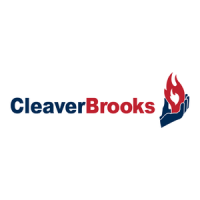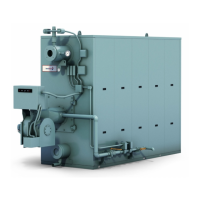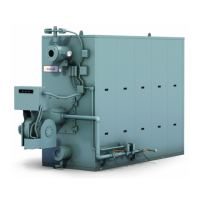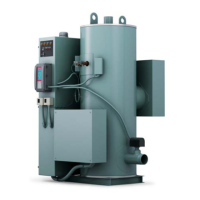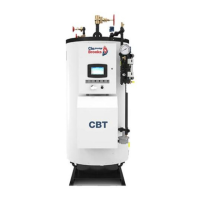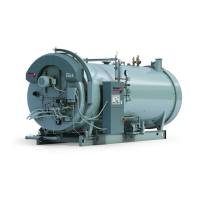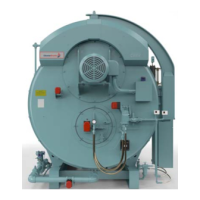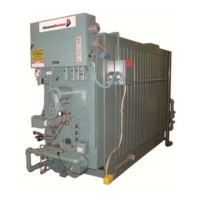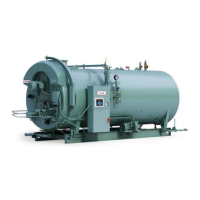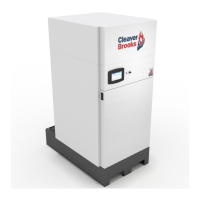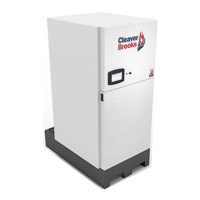Chapter 3 Pressure Vessel Care
3-4 750-177
Silica 150 ppm
Specific Conductance 3500 μmho/cm
Total Alkalinity 300 ppm as C
a
CO
3
Total Hardness 0 ppm as C
a
CO
3
Oxygen (O
2
)7 ppb
pH 10
Total Iron 0.05 ppm
Oily Matter 1 ppm
boiler will initiate a “call for water” from the make-up
controller, which will require that the feed water be delivered
to the boiler in sufficient quantities to prevent a low water
cutoff trip. Table 3-2 lists the minimum feed water flow
requirements for the various boiler models. In addition, feed
water must be warmed to a minimum of 60°F. in order to
ensure reliable operation of the boiler. The feed water supply
should be adjusted to deliver water to the boiler at or above
these minimum rates.
D. WATER TREATMENT
Properly treated boiler water will result in maximum
effectiveness and long trouble-free life of the pressure vessel.
Contact your local Cleaver-Brooks Representative or water
management consultant for complete information on how to
prevent damage resulting from inadequate water treatment.
The objectives of water treatment in general are to:
1. Prevent hard scale and soft sludge deposits that inhibit
heat transfer and that could lead to overheated metal and
costly downtime and repairs.
2. Eliminate corrosive gases in the supply or boiler water.
To accomplish these objectives, the boiler requires proper
water treatment before and after introduction of water into the
unit. The selection of pretreatment processes depends upon
the water source, its chemical characteristics, the amount of
makeup water needed, system operation practices, etc.
Because of the variables involved, no one boiler compound
can be considered a cure-all; nor is it advisable to experiment
with homemade treating methods. A sound treatment
program should include a periodic analysis of the water in the
system.
The internal or waterside surfaces of the pressure vessel
should be inspected at sufficient intervals to detect the
presence of any corrosion, pitting, contamination, or
accumulations of foreign matter. If any of these conditions
are detected, contact your local Cleaver-Brooks authorized
representative for advice on corrective action. It is
recommended that a properly sized water meter be installed
in the raw water makeup line to accurately determine the
amount of raw water admitted to the boiler. It is a false
assumption that a hot water boiler does not require water
treatment. Even though a hot water unit generally operates on
a closed system and blowdown seldom is practiced, the need
remains to be alert to system water losses. Knowing the
amount of makeup water admitted to the system will aid in
maintaining proper waterside conditions.
E. BLOWDOWN
A steam boiler requires periodic blowdown of the boiler and
water column (Figure 3-4). Blowdown is the removal of some
of the concentrated water from the boiler and the water level
Note: Feedwater to the boiler must be at least 60 °F for minimum performance; 212 °F is preferred.
BOILER MODEL 150 200 250 300 350 400 450 500 550 600 700 800 900 1000 1100 1200
Minimum Feed Rate (gpm) 4.9 6.6 8.2 9.9 11.6 13.214.916.518.219.823.126.4 29.7 33.0 36.3 39.6
Table 3-2: Minimum Boiler Feed Water Flow Rates (Steam Boiler)
Table 3-3: Boiler Water Quality Limits
(Steam Boilers)
Figure 3-4: Low Water Cutoff and Gauge Glass with
Blowdown Valve
